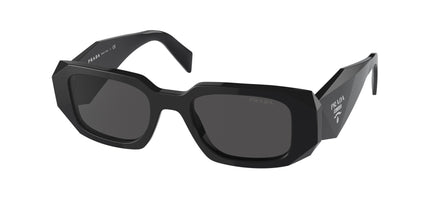Designing and Creating Glasses: A Step-by-Step Process!

As a glasses lover, you must wonder how big brands and the glasses industry release eyewear collection season after season. Where do these unique ideas and designs come from? How are they finalized?
To make the best products, the design and product teams need to collaborate fully. Their creativity, expertise, and passion bring beauty and life to these glasses. This blog post will reveal a few general steps every famous glasses brand follows to release its eyewear products yearly.
1. Getting Inspired & Creating Mood Boards
The first step is to make mood boards. Mood boards provide the perfect visual aid displaying a list of design directions for the glasses. The existing trends, people’s preferences, glasses shape, and color, and so many more points are considered in this first step.
The inspiration for these products can come from anywhere - whether it’s walking down the road to a coffee shop or looking at abstract ideas on the internet. After visually displaying these stimulating ideas, the teams go through multiple brainstorming sessions.
These sessions turn fruitful with discussions confirming which styles to move forward with.
2. The Design Process
Time for the design team to shine. The design team turns in the first concepts of the glasses on paper for discussion. People involved in these discussions decide on the color combinations that will reflect their brand and that the customers would love.
The end product of these discussions includes design drawings, frame materials, dimensions, and other important information that the entire team will carefully examine. Later, these designs are sent to the brand’s experienced product engineers, who check them for feasibility before moving on to the product’s prototype.
3. Perfecting the Prototype
Big brands can’t move forward without perfecting the prototypes of their latest eyewear collection. This step tests true craftsmanship. Many glasses brands get these prototypes designed by hand.
This requires special attention to detail, steady hands, and great skill. Throughout the prototype process, the number of iterations depends on the complexity and perfection of the product’s design.
4. Technical Inspection
After developing the prototypes, each product’s prototype has to go through a series of strict technical analyses. Typically, each brand has hired expert technical specialists to check for individual frames and their components and assess the materials used.
They check the frame for durability, strength, density, and stability, along with other factors. The top priority concern remains to ensure top quality. Finalizing a top-quality glasses product is what this step achieves to meet the brand’s quality standards.
5. The Finishing Touches
As soon as the prototypes are perfected, they are delivered to the product team. Now, it is the product team’s job to ensure further quality and check the frames' appearance, fit, and feel.
Only the frames passing the quality standards - meaning the best ones - move forward for fine-tuning. We know you thought that this was it. We have the final product, which is ready to release.
But no! Creating a product is truly complex, especially the ones that affect the mass population. In the fine-tuning process, the teams discuss the final changes (if any) and move forward with suggestions.
The sample products (prototypes) are made with great attention to detail, passion, and determination. A single mistake throughout the system can destroy the product. After this, the moulds are produced with manual or automatic labor (depending on the brand).
6. You Have the Finished Product
After finalizing the latest prototypes, conducting technical analysis, fine-tuning these samples, and further analysis, the production process starts. The teams and higher execs wait patiently yet excitedly for the finalized samples.
Generally, these finalized samples are tested while complying with the CE guidelines before the brand can launch them in the public market. However, different brands can also add a set of unique guidelines to impose and enhance the quality of their products.
These high-quality frames give these brands a better chance to have the edge over their competitors. And finally, after this thorough process, all the teams have a final finished product of glasses that they can touch and appreciate.
Conclusion
The process of designing any product is complex. All the teams have to come together and work to reach the stage of a designed finalized product. Since glasses are everyday eyewear and are preferred worldwide, brands need to focus more on designing and releasing the best ones for their customers.
This includes a rigorous testing and designing process where collaboration, an eye for detail, and creativity are vital. So now you know the general process of how glasses are created and delivered to the general public.















 Back to Blog Page
Back to Blog Page











